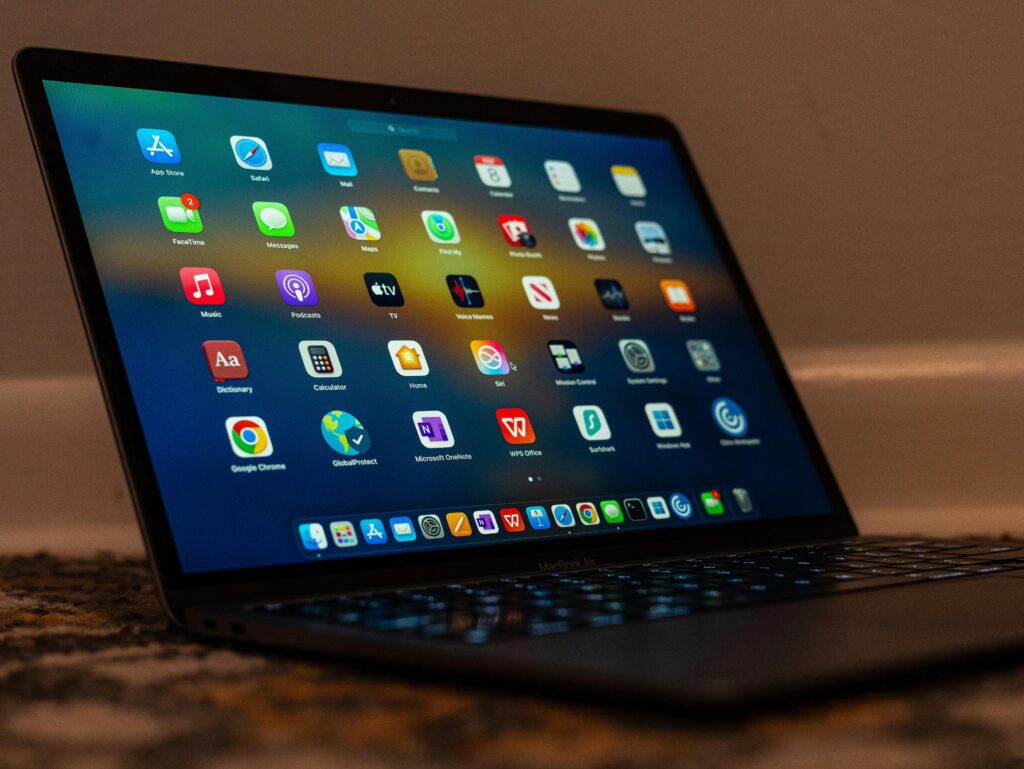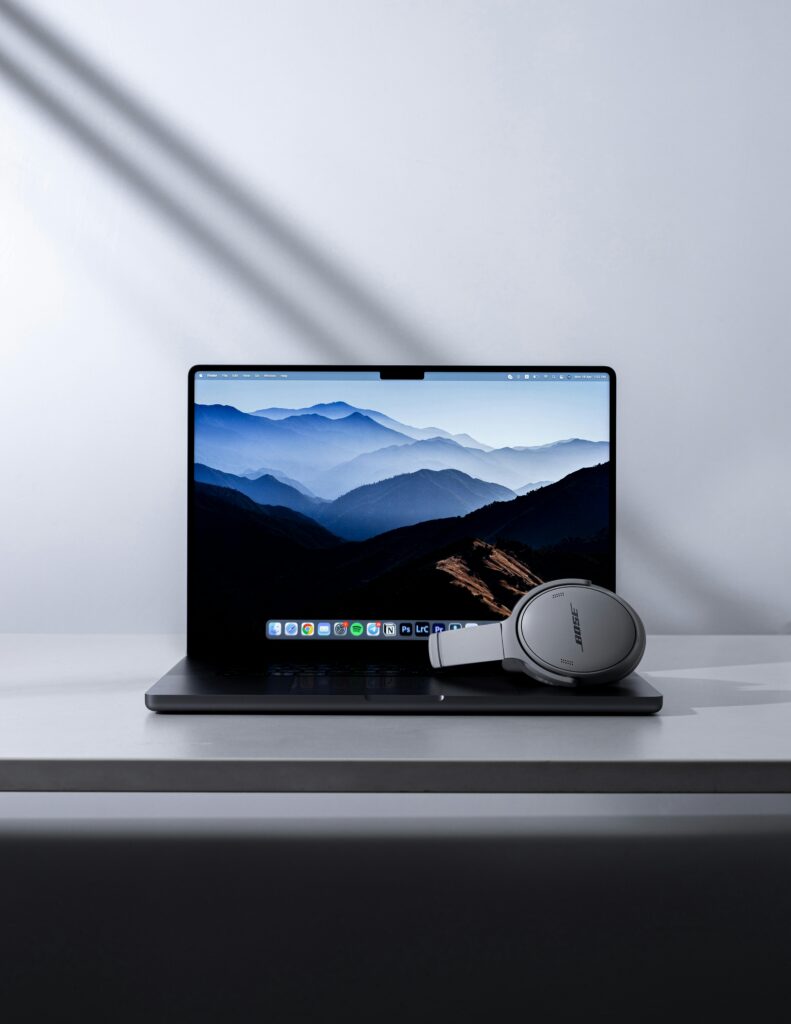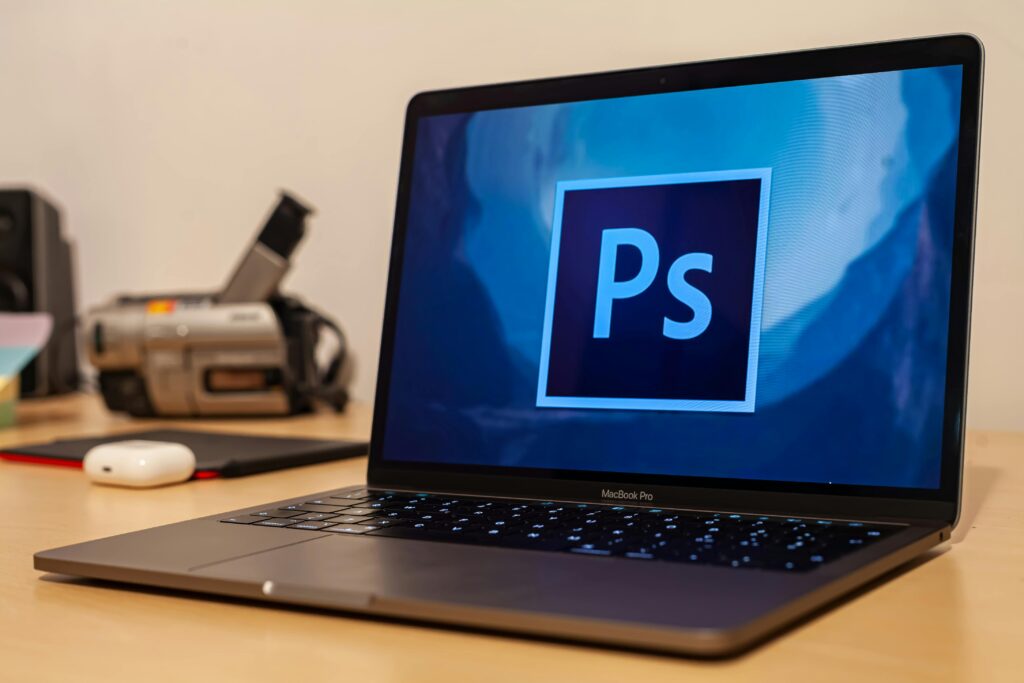For decades, the x86 architecture, led by Intel and AMD, dominated the world of personal computing, particularly laptops. This design served as the cornerstone for practically all mainstream laptops, including student notebooks and high-performance gaming devices. Its legacy spans years and is closely integrated with Windows, as well as a wide ecosystem of software designed exclusively for x86 CPUs.
However, in recent years, a subtle yet significant shift has begun to transform the laptop landscape.
Presenting ARM architecture, a long-standing technology that has been utilized in tablets and smartphones because of its thermal benefits and power economy. ARM was once thought to be too weak for demanding computer tasks, but it has quickly developed into a strong competitor in the laptop industry. There is ample evidence that this change is occurring in real time, so it is not merely theoretical.
With the release of the M1 chip in 2020, the Apple Silicon revolution demonstrated that ARM-based CPUs could provide remarkable performance without compromising battery life. In addition to outperforming numerous x86 laptops, Apple’s specially created ARM CPUs changed the standards for tiny, fanless machines.
Conversely, a broader shift in the industry is evident in Microsoft’s increasing investment in Windows on ARM, which includes the next generation of Copilot+ PCs powered by Qualcomm’s Snapdragon X Elite and Plus CPUs. With the growing need for laptops that are always connected and energy efficient, ARM’s momentum is expanding outside Apple’s ecosystem.
In this article, we’ll explore the two core themes driving the conversation around ARM-based laptops:
- How do ARM chips perform compared to traditional x86 processors?
- What compatibility challenges do users face when switching to ARM-powered systems?
This isn’t just a change in chipsets—it’s a potential architectural turning point that could redefine the future of laptops.
What Are ARM-Based Laptops?

The CPU architecture is the design that governs how a laptop handles instructions, allocates resources, and runs applications. x86 (and its 64-bit version, x64), a Complex Instruction Set Computing (CISC) design that was first introduced by Intel and subsequently embraced by AMD, has remained the architecture throughout most of computing history.
Reduced Instruction Set Computing (RISC) is the alternative idea upon which ARM is based. To put it simply, RISC architectures, such as ARM, employ a simplified set of instructions that are easier to understand and execute more quickly. Even though a single instruction might not accomplish as much as its x86 counterpart, total efficiency is frequently superior, particularly for applications where battery life, heat, and power are important considerations.
So, what does that mean for laptops?
Compared to traditional x86 CPUs, ARM-based devices are often more power-efficient, produce less heat, and may be tightly integrated with other components such as memory, GPU, and AI accelerators on a single chip—known as a System-on-a-Chip (SoC). This integration enables slimmer, quieter laptops with longer battery life and instant-on capabilities—features we’ve come to expect from smartphones and tablets.
Here are the major players currently driving ARM-based laptop innovation:
- Apple
Apple has reshaped the possibilities of ARM in computing with its specially created M-series CPUs (M1, M2, and now M3). With the help of these SoCs, which combine excellent performance and power economy, MacBooks can provide lightning-fast speeds, quiet operation, and all-day battery life.
- Qualcomm
Qualcomm, which has traditionally dominated the smartphone market, is now leading the ARM drive in the Windows ecosystem with the Snapdragon X Elite and Snapdragon X Plus CPUs. These processors are specifically intended for Copilot+ PCs, with integrated NPUs (neural processing units) for AI workloads and better Windows compatibility.
- MediaTek
While MediaTek is more active in Chromebooks and low-cost devices, it is gradually growing into laptops with ARM-based designs geared at economical, efficient computing.
- Others
Companies such as Samsung and Ampere are also looking at ARM-based semiconductor development, notably for enterprise, server, and niche computing applications.
Why ARM Now? The Catalyst for Change

ARM-based laptops are not a completely novel concept. For many years, smartphones, tablets, and other small gadgets were powered by ARM processors. However, the industry has only lately started to give ARM significant consideration as a feasible consumer laptop platform. So what was different?
1. The Rise of Mobile-First Computing and Hybrid Work
More than ever, modern laptop users need seamless connectivity, all-day battery life, instant-on response, and the capacity to manage work, play, and communication while on the go. These are the core advantages of the ARM architecture, and they are well-suited to the needs of hybrid work patterns and mobile-first computing, which became commonplace after 2020.
Modern customers desire devices that are always ready, lightweight, silent, and long-lasting, which is where ARM-based systems excel. This is in contrast to traditional laptops that valued raw performance over efficiency.
2. Apple’s Transition to M1: A Defining Moment
Apple released the first ARM-based MacBook Air and MacBook Pro, which were powered by the Apple M1 chip, in November 2020. The decision to completely forgo Intel’s x86 CPUs in favor of an entirely in-house ARM design was audacious.
The outcomes were astounding:
- Significant increases in battery life (up to 18–20 hours)
- Quieter, cooler operating
- Performance that was superior to many laptops, including desktops, made by AMD and Intel
Apple demonstrated that ARM was not merely adequate, but had the potential to be even better. This was a statement to the rest of the industry that ARM had made its presence known, not merely a product introduction.
3. Microsoft’s Bet on Windows on ARM
Whereas Microsoft adopted a more measured approach, Apple fully committed to macOS on ARM. Microsoft has been improving Windows on ARM over the last few years, and new information points to a more determined effort.
The introduction of Copilot+ PCs in 2024, which were driven by Qualcomm’s Snapdragon X Elite and X Plus CPUs, marked the true turning point. These gadgets enable capabilities like real-time translation, live captioning, on-device generative AI, and the contentious Recall feature by combining ARM-based efficiency with specialized NPUs for AI workloads.
Apps that previously had trouble running on ARM are now more compatible thanks to Microsoft’s investments in emulation and native ARM64 support.
4. Advances in Chip Fabrication and Thermal Management
Advances in semiconductor fabrication are also largely responsible for ARM’s rise. Higher transistor densities with reduced power consumption are made possible by new nodes like TSMC’s 5nm and 3nm technologies, which are ideal for ARM’s effective instruction set.
Powerful ARM CPUs can now be more easily installed in thin and light laptops without sacrificing comfort or performance thanks to advancements in passive cooling, fanless design, and integrated systems.
Performance: How Do ARM Laptops Stack Up?

Due to their high clock rates, multi-core designs, and decades of software optimization, Intel and AMD have historically dominated the performance market for x86 laptops. However, ARM-based laptops have challenged that notion, particularly with the most recent CPUs from Qualcomm and Apple.
Let’s examine the actual performance of ARM laptops in the real world.
1. Real-World Performance: Speed That Surprises
Early benchmarks and user feedback after Apple’s 2020 introduction of the M1 processor showed something remarkable.
ARM-based Macs were performing on par with or better than Intel’s top laptop CPUs while consuming a lot less power.
Geekbench & Cinebench Scores: In multi-core tasks, the M1, M2, and now M3 CPUs often beat Intel’s U-series and even some H-series chips.
Qualcomm Snapdragon X Elite: According to independent benchmarks, these chips perform on par with or better than AMD Ryzen 7 and Intel Core Ultra 7 in single- and multi-threaded applications, particularly under ideal conditions.
Users’ remarks about buttery-smooth multitasking, rapid wake-up from sleep, and quick app launches, so these aren’t just statistics on paper.
Also Read: What Makes a Laptop Really Fast? – CPU, GPU, RAM, or Storage
2. Efficiency vs. Raw Power: A Strategic Trade-Off
In terms of raw clock speed and high-end gaming frame rates, ARM processors don’t always outperform x86, but they don’t have to. Their efficiency per watt is excellent.
High performance can be maintained by Apple’s M-series SoCs even when passive cooling is used, which eliminates fan noise and thermal throttling.
AI-enhanced power management is a feature of Snapdragon X Elite CPUs, which dynamically balance battery usage and performance.
Because of this, ARM is perfect for professionals, creators, and regular users who desire power without fan noise or heat.
3. App Launch, Multitasking, and Smooth UX
In daily usage, ARM laptops frequently feel faster, not simply because of benchmarks, but also because of their close hardware and software integration.
App Launch Speeds: Native ARM apps load nearly instantaneously, such as Windows Edge or macOS Final Cut Pro.
Multitasking: Apple’s chips’ unified memory architecture eliminates the need to copy data between the CPU and GPU, which cuts down on lag.
Fanless Operation: Even with light workloads, a number of ARM laptops, such as the MacBook Air and the next generation of models with Snapdragon X, are utterly silent.
4. Battery Life: ARM’s Clear Advantage
Battery life is one area where ARM is unquestionably dominant.
Apple MacBook Air M2: 12–14 hours of active use and up to 18–20 hours of video playback.
According to early assessments, Copilot+ PCs with Snapdragon X Elite may run for more than 20 hours, frequently outperforming Intel’s best-effort Evo-certified computers by a number of hours.
ARM chips are perfect for students, travelers, and hybrid workers who require their computers to survive all day because they sip power rather than guzzling it.
5. GPU and AI Performance: The New Frontier
There is more to ARM processors than CPUs. They have significant GPU and AI power.
Apple’s built-in GPUs on the M2/M3 can edit 4K videos, render 3D images, and even play games at low settings, which was unthinkable for integrated graphics only a few years ago.
The Snapdragon X Elite has strong NPUs (neural processing units) with 45 TOPS, which are used in Windows 11 for on-device AI features like generative AI, real-time translation, and background blur.
ARM laptops are more future-proof than many x86 ones as more apps adopt AI-enhanced capabilities.
Software Compatibility: The Elephant in the Room

Despite all of the improvements in performance and economy, ARM-based laptops still have a major problem with software compatibility. The software ecosystem, particularly for Windows, has taken longer to catch up with the rapid advancements in hardware.
Let’s examine the current situation.
1. Native vs. Emulated Apps: What Works and What Doesn’t
The way that ARM and x86 laptops run software is the primary distinction between them. Almost all applications are natively compiled to run on x86 computers. However, there are two options on ARM.
ARM64 native apps: These are designed with ARM chips in mind. They operate smoothly, quickly, and efficiently. Part of the reason Apple’s shift went more smoothly was that it swiftly obtained native versions of the majority of the most popular macOS software.
Emulated x86 apps: These use a translation layer; Rosetta 2 was used on macOS, while Prism (previously a component of the Windows Subsystem for Emulation) is currently used on Windows.
Performance of emulated apps has improved significantly, but –
- They may still run slower than native equivalents.
- Some apps may not run at all if they rely on low-level drivers or legacy dependencies.
- There can be bugs, interface glitches, or feature limitations.
2. Windows on ARM: Significant but Incomplete Progress
In terms of bringing Windows on ARM closer to feature parity with x86 Windows, Microsoft has made significant progress. The most recent versions of Windows 11 support the following.
Prism: Effective emulation layer for x86 and x64.
Important applications, such as Microsoft Office, Edge, Teams, and even Visual Studio 2022, have native ARM64 versions.
Third-party support: Native or optimized ARM versions are now available for programs like Zoom, Slack, VLC, and Firefox.
Furthermore, with certain restrictions, users can run full Windows ARM virtual machines (VMs) using programs like Parallels Desktop (for Mac), which is helpful for testing or running legacy apps.
Problems still exist, though not all developers give ARM builds top priority; compatibility issues may still exist with certain kernel extensions, VPN clients, and enterprise programs. Peripheral drivers for devices like printers, scanners, and specialized hardware might be inconsistent.
3. Compatibility with Pro Software: Mixed Bag

Though not yet flawless, the situation with regard to professional and creative software is improving:
Adobe Creative Cloud: Adobe has made considerable progress with ARM optimizations for Windows, and the majority of products, such as Photoshop, Lightroom, and Premiere Pro, work natively on Apple Silicon.
Visual Studio Code: ARM is natively supported on Windows and macOS.
SolidWorks, MATLAB, AutoCAD: Depending on the workload and platform, some might need x86 emulation, and performance might change.
Legacy or niche tools: Many professional tools that are older or less widely used have not been updated for ARM and may not function at all or perform poorly.
To put it briefly, ARM laptops are becoming more and more popular among creative workers; nonetheless, engineers and some power users should carefully review software requirements before switching.
4. Gaming on ARM: A Work in Progress
One of ARM’s weakest points is still gaming, particularly on Windows.
Thanks to Metal and expanding developer support, Apple’s M-series CPUs can run games like Resident Evil Village, No Man’s Sky, and Death Stranding smoothly on macOS.
The situation is less refined on Windows ARM –
Emulation works well for some older or simpler games.
The majority of AAA games with anti-cheat features or designed for DirectX 11/12 just won’t run.
There are very few native ARM games on Windows.
A good solution for casual gamers is offered by cloud gaming services like Xbox Cloud, GeForce NOW, and Steam Link, which function flawlessly on ARM devices.
5. Linux and ARM: Strong Developer Momentum
The Linux community has welcomed ARM with open arms, if there is one such community.
Stable ARM builds are now available from Fedora, Arch, Ubuntu, and others.
For years, ARM development has been driven by the Raspberry Pi community.
Because they can run containers, create lightweight virtual machines, and experiment with cross-platform programming, developers adore ARM computers like the MacBook M-series.
But not every proprietary Linux driver or application is ARM-ready. For some distributions to function properly on specific ARM laptops, manual adjustments may be required.
All things considered, Linux on ARM is developing quickly and is one of the most fascinating new areas for developers.
The primary source of contention in the ARM transition narrative is software compatibility. Even though the gap is narrowing quickly, “your mileage may vary.”
ARM laptops may already be more suitable for you than x86 if your workflow depends on services and programs that are supported. However, you should carefully consider your options if you’re committed to serious PC gaming, specialized enterprise tools, or older software.
Benefits of ARM-Based Laptops

The move to ARM is about reimagining the laptop experience, not merely switching chips. Beyond benchmarks, ARM-based laptops offer a number of useful advantages that translate into actual, daily usability. This is what distinguishes them.
1. Exceptional Battery Efficiency
ARM chips are built with minimal power consumption in mind. ARM processors operate efficiently and coolly, in contrast to conventional x86 CPUs, which frequently need fans and high voltages to sustain performance.
MacBooks with M-series CPUs have a battery life of more than 20 hours.
Real-world usage of Windows Copilot+ PCs with Snapdragon X Elite exceeds 18 to 20 hours.
ARM-based laptops are made to last, whether you’re studying all day without an outlet, traveling long distances, or hopping between meetings.
2. Silent, Fanless Designs
Many laptops don’t require fans at all because ARM processors produce far less heat.
Devices such as the Lenovo Yoga Slim 7x and MacBook Air M2/M3 operate in total silence.
Compared to their x86 predecessors, even more powerful ARM laptops operate more quietly and coolly.
This results in a distraction-free environment that is perfect for working in quiet offices, cafes, classrooms, and libraries.
3. Built-In AI and Neural Engines
Apple and Qualcomm’s ARM chips come with specialized Neural Processing Units (NPUs) that are made to effectively and locally handle AI tasks.
With little CPU load, Apple’s M-series CPUs can perform voice commands, image recognition, and background operations.
45 TOPS of NPU performance are provided by Snapdragon X Elite CPUs, providing capabilities such as live translations and captions, AI-powered photo editing, voice commands, recall, and on-device summarizing.
These are useful tools for accessibility, creativity, and productivity, not just gimmicks.
4. Instant-On Responsiveness
ARM-based laptops have no lag or boot-up delay and wake up from sleep in less than a second.
Like a smartphone, you just need to lift the top to get started.
Copilot+ Windows laptops and Apple Silicon Macs now come with this always-ready feature as standard.
Ideal for people who switch between apps, meetings, or short jobs all day long.
5. Lower Thermals and Better Portability
ARM laptops are generally thinner and lighter, thanks to lower heat output, fewer cooling components, and more efficient system-on-a-chip (SoC) designs.
This means slimmer chassis and less bulk in your bag, no hot laps during long sessions, and longer component lifespan due to reduced thermal stress.
For students, digital nomads, and mobile professionals, ARM-based laptops are the ultimate travel companions.
Limitations and Concerns
Although ARM-based laptops have several advantages in terms of efficiency and innovation, there are some drawbacks. Many consumers still face obstacles that cannot be disregarded, particularly power users, gamers, and business purchasers. Here is an objective examination of the main drawbacks.
1. Software Compatibility Gaps
This remains the single significant problem for future ARM laptop customers.
x86 emulation (via Rosetta on macOS or Prism on Windows) is good, but not flawless.
Some apps, particularly older or niche software, may perform more slowly, lack capabilities, or fail entirely.
Developers are gradually migrating software to ARM. However, not all important tools (such as finance, engineering, or legacy enterprise apps) are currently ARM-native.
If your process requires special Windows software or hardware drivers, you should double-check compatibility before switching.
2. Limited Upgradability and Customization
ARM laptops often feature System-on-a-Chip (SoC) architectures that tightly combine the CPU, GPU, RAM, and other components.
Most models do not allow you to update the RAM or storage.
Customizing hardware configurations is also limited when compared to x86 laptops like Dell, Lenovo, and HP.
This sealed-box architecture is ideal for simplicity and efficiency, but tinkerers, DIY upgraders, and IT administrators may feel limited.
3. Fewer Options in Mid-Range and Gaming Segments
While premium and ultralight ARM laptops are becoming more popular, mid-range and gaming-oriented ARM machines remain scarce.
Gaming on ARM remains limited, particularly on Windows.
There is a lack of discrete GPU support and game compatibility with anti-cheat software.
The majority of economic ARM laptops are Chromebooks or entry-level tablets, rather than full-featured devices.
If you’re searching for a low-cost workhorse or gaming powerhouse, the x86 market still has more options and a superior price-to-performance ratio, for now.
4. Enterprise and IT Adoption Still Catching Up
The advantages of ARM are obvious, yet x86 is still the norm for many large corporations and IT departments.
x86 is frequently the foundation of software licensing, management tools, virtualization, and security standards.
Without complete driver and application support, administrators could be hesitant to install ARM devices.
For dependable operation, remote desktop configurations, VPN clients, and bespoke software could require testing and tweaking.
Enterprise environments may continue to adopt ARM slowly and cautiously until tools and support systems catch up.
Who Should Buy an ARM Laptop Today?
ARM-based laptops have advanced significantly, and they can provide a revolutionary computing experience for the appropriate user. However, they aren’t yet suitable for everyone. Here is a breakdown of who might be better off waiting a little while longer and who should think about purchasing an ARM laptop today.
Great Fit: Who Should Buy an ARM Laptop Today
Students & Casual Users
For browsing, taking notes, streaming videos, and being productive, ARM laptops, such as the MacBook Air M2/M3/M4, or Windows laptops with Snapdragon X processors are ideal.
They are perfect for extended lessons or library sessions because they are lightweight, quiet, and offer an unparalleled battery life.
Also Read: Top 9 Best Laptops for Students in 2025 in India
Remote Workers & Travelers
ARM laptops are ideal if portability, battery life, and instant-on convenience are important to you.
Professionals on the run will love models like the Samsung Galaxy Book4 Edge and Lenovo Yoga Slim 7x.
Also Read: Top 10 Best Laptops For Travellers – Compact, Lightweight, And Powerful Options
Content Creators in the Apple Ecosystem
Professional-level performance for design, photography, and video editing is available on Apple’s M-series laptops.
Users of MacBook Pro M4 won’t miss x86 at all thanks to native support for programs like Photoshop, Logic Pro, Final Cut Pro, and more.
Developers and Tech Enthusiasts
ARM now has native support for a number of development tools, including VS Code, Docker, and terminal environments.
The dev community is enthusiastically embracing ARM platforms, and Linux is well supported.
ARM laptops are a good option for those who work in web development or cross-platform programming.
Also Read: Top 10 Best Laptops For Coding
Who Should Wait (For Now)
Gamers
Windows gaming on ARM laptops is still not widely supported.
Emulation problems or anti-cheat incompatibility prevent many AAA games from running.
For now, continue with x86 if gaming is important.
Also Read: Top 7 Best Laptops For Gamers In India
Enterprise Users with Legacy Apps
ARM might not function reliably just yet if your company uses tools, VPNs, or custom software that needs particular x86 drivers.
Although it’s getting better, compatibility is still not universal, particularly in specialized corporate settings.
Power Users Needing Upgradability or Niche Tools
RAM and storage on ARM laptops are frequently non-upgradable, and there may be limited support for programs like AutoCAD, specific development frameworks, or virtualization software.
You may want to wait for further support or choose x86 if you require high configurability or use obscure legacy tools.
Final Thoughts
One of the biggest architectural changes in contemporary computing is the emergence of laptops with ARM processors. ARM processors, which were previously only found in smartphones and tablets, have now demonstrated the unusual and valuable ability to provide desktop-class performance with mobile-class efficiency.
What ARM Laptops Do Well
Exceptional battery life, frequently surpassing 20 hours
Fanless, silent operation in lightweight, thin designs
For the majority of daily tasks, quick and responsive performance
AI engines that are integrated and support next-generation characteristics
An expanding ecosystem of developer tools and native programs
ARM laptops provide a cutting-edge substitute for conventional x86 computers, regardless of your role—student, content producer, or remote worker.
But There Are Still Trade-Offs
Software compatibility is still lacking, particularly for specialized programs, legacy enterprise tools, and gaming.
Because of integrated SoC designs, hardware customization and upgrades are limited.
Fewer choices in the high-performance and low-cost gaming categories
Although ARM laptops aren’t flawless, they’re becoming better all the time, and for many people, they’re already the better option.
FAQ
Can I run all Windows apps on ARM laptops?
Many, but not all.
The majority of x86 and x64 software can run on ARM computers because of emulation layers like Prism in Windows 11. Performance can vary, though, and some complicated or older apps might not function properly, particularly if they have kernel-level drivers or legacy dependencies. The greatest experience is provided by native ARM apps.Is an ARM laptop good for coding or development work?
Yes, particularly for cross-platform and web development.
Popular tools like VS Code, Docker, Git, Node.js, and even Linux virtual machines or containers are supported on ARM laptops, such as the MacBook Air M2/M3 and Copilot+ PCs. ARM laptops are becoming an increasingly viable option for open-source, cloud-native, and mobile development.Are ARM laptops better than Intel or AMD for battery life?
Of course.
Because ARM processors are based on the power-efficient RISC architecture, their battery life is noticeably longer than that of the majority of x86 laptops. With a single charge, devices such as the MacBook Air M3 and PCs with Snapdragon X Elite can easily run for 18 to 20 hours or more.Will gaming laptops ever switch to ARM?
Maybe, but not anytime soon.
Even though ARM performance is becoming better, anti-cheat software, a lack of separate GPU support, and poor compatibility with many games still limit ARM gaming. This might alter in the future, though, as cloud gaming expands and game developers adopt native ARM support.Do ARM laptops support Linux or dual-booting?
Yes, but with some restrictions.
Although Linux may be installed on many ARM laptops, particularly those made by Apple and Microsoft, manual setup and customized kernels may be necessary. ARM binaries are available from distributions like Fedora, Arch, and Ubuntu, and developers are quite excited about them. Dual-booting isn’t officially supported on all hardware, though, and it can be more complicated than on x86 systems.
Share Now
Discover more from technicalstudies
Subscribe to get the latest posts sent to your email.

